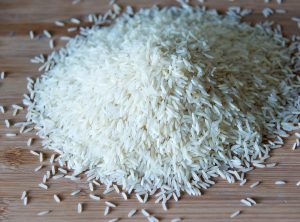A former wine industry employee warns to beware of arsenic in US wines. Recently wine testers detected that many California wines contain high amounts of arsenic. Here is a full list of wines where arsenic was found. Often it is the cheaper wines that have the highest arsenic content.
Trader Joe’s has a problem with three wines. The 2 dollar Zinfandel (“Two Buck Chuck)”, their “Menage a Trois Moscato” and “Franzia White Grenache” were too high in arsenic. They had 3-5 times the allowable amount of arsenic than the limit that is acceptable for drinking water.
The lawyers of a lawsuit against the wine industry think that the norm for arsenic content in wine should be the same as the one established for drinking water. However, the wine industry is defending itself saying that people drink more water than wine.
Arsenic in rice
In the past there were high arsenic levels in rice. An investigation found the high levels of arsenic in rice linked to high levels of arsenic in soil. By and large high arsenic levels in rice come from inadvertent human poisoning. As explained in the Consumers Report high arsenic values were found in rice grown in these states: Arkansas, Louisiana, Missouri, and Texas. These are the same states, where farmers grew cotton in the past. The U.S. has been the world’s leading user of arsenic at that time. Since 1910 about 1.6 million tons of arsenic been in use for agricultural/industrial purposes. Half of this occurred since the mid-1960s. Although arsenic is banned as an insecticide since the 1980’s, residues from the decades of use still linger on in agricultural soil today. For decades arsenic compounds were used for decades in an attempt to combat the boll weevil beetle.
Arsenic in grape juice, apple juice and chicken meat
Arsenic containing insecticides are also in use in the fruit growing industry. This explains the presence of arsenic in grape juice and apple juice. Another source of contamination with arsenic compounds comes from chicken feed that the chicken farmer uses to promote growth. As a result arsenic will be in chicken meat. For this reason alone it is recommendable to eat organic chicken that is free of arsenic.
Keep in mind that brown rice has persistently tested higher in arsenic than white rice.
Beware of arsenic in US wines and in your food
We know for some time now that chicken raised in farms have arsenic in their meat because of the practice to feed arsenic compounds to promote growth. Arsenic is a carcinogen, and is causing many cancers. As the last link said, there is a great need to regulate the food industry and check for arsenic contamination of food in general as well.
How do wine growers introduce arsenic into wine?
There are several possibilities how wine could become contaminated with arsenic. The example of arsenic in rice taught us that old cotton fields where in the past arsenic containing pesticides were in use could be the source of arsenic in rice today. If wine is grown in similar soil that has contamination with arsenic , it likely could get into the grapes.
At this point there has not been an investigation into arsenic in wine. The fact that the majority of wines had high arsenic values makes me believe that the wine growers spray arsenic compounds onto the leaves and grapes of wine plants to treat for various pests.
Organic wine
Organic wine must have a certification by an independent third-party organization. This organization does annual audits on vineyards. The grapes they grow and the soil on which the vine plants grow have to all be examined. Strict standards apply and the organic winegrower has to comply with them to receive the organic certification. Not only is there supervision by the organic certification body, but also by the department of agriculture. The wine grower cannot sell wine as “organic”, if it is not certified.
If you want arsenic free wine, buy organic wine. Here is a brief description of what certified organic wine is.
What arsenic does to your body
Long-term exposure to low doses of arsenic can interrupt the way cells communicate and function. It can contribute to developing diabetes, cancer, vascular disease and lung disease. In addition, high levels of arsenic can cause skin cancer, bladder cancer, lung cancer and heart attacks. It is the inorganic arsenic compounds that are more toxic. This is what researchers found in water and unfortunately also in wine. Organic arsenic compounds as found in seafood are less toxic.
Conclusion
There are a lot of unanswered questions regarding arsenic in regular wines. In the US the limit for arsenic in drinking water is 10 parts per billion (ppb). Wines on average have 24 ppb of arsenic in it. A legal case is presently awaiting a trial. The issue is whether the arsenic limits in drinking water also apply to arsenic limits in wine. The wine industry is adamant that people drink more water than wine, so one could not compare the two. But the wine industry also wants to sell more wine.
You can switch to an organic wine, which by definition should have less arsenic in it. Arsenic can cause lung disease and various cancers (lung and kidneys). If you drink very little or moderately, you are fairly safe from toxic effects of arsenic. But this topic needs further evaluation, and caution is in order.








